A personal story by Emme Tomimbang
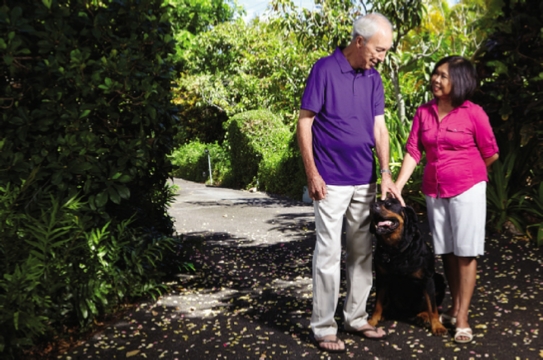
In this issue of Generations Magazine, TV personality Emme Tomimbang shares her personal story of how learning to be the caregiver—and the patient—changed her outlook on life and family forever.
Most of you know my work as a television news reporter, host and producer of my own show Emme’s Island Moments. In my 20 years of TV news and another 20 in independent television production, I’ve done hundreds of people profiles, lifestyle clips and health segments on AIDS, diabetes, leukemia and heart disease. But nothing could have prepared me for the life-changing role as a caregiver. This time, I was not researching, interviewing or reporting on a difficult subject for a television series—rather, I was living the drama—the life of a caregiver and, eventually, the patient.
My husband Jim Burns, who retired as Chief Judge of the State Intermediate Court Of Appeals six years ago, and I share our story publicly because we want other couples and families who find themselves caregiving each other to know they are not alone.
About two years ago, I started a life-altering journey in becoming a multiple caregiver for a friend, mother, husband and, yes, even a pet. My caregiving experience started with one of my best friends, Mary, who had just returned from a visit to the Philippines. The following day she suffered a stroke that placed her in intensive care at The Queen’s Medical Center. In the weeks that followed, I helped her husband and family care for her in the hospital, at rehab and later at home. Most of what I did included emotional support, weekly visits and some advocacy work helping them navigate through the confusing world of hospital, home and healthcare.
Today, I’m happy to report that my friend walks proudly with a cane and is recovering well.
Three months after Mary’s hospitalization, my mom, Nena, had back surgery and at the age of 85 was hospitalized at a Kaiser Permanente Medical Center. She bravely fought to live even while on a ventilator and trachea tube. She could not speak until three months later. During her hospital stay, my sisters (one of them who flew in from San Francisco almost monthly) and I took daily, six-hour hospital caregiving shifts. Our family became part of her medical team. After a seven-month hospital stay, my mom was eventually taken off all her machines and left Kaiser for an advanced nursing home.
Caregiving: In Sickness, In Health
Three months prior to my mother’s departure, my husband Jim was diagnosed with throat cancer stage 4. So while caregiving for my mom in the hospital, I was blindsided with my husband’s life-threatening diagnoses. We hit the ground running learning about his illness, treatments and eventual home care.
We found out about Jim’s medical matter in October 2011 just days before our planned trip to Australia to visit relatives.
Our internist Dr. Thomas Au suggested, “Go take that trip and enjoy yourselves. When you return, we’ll begin treatments.” It was the best advice. We had a wonderful time knowing our lives would be so different once we returned home. It made the trip bittersweet, but we took pleasure in our moments together even more so.
Our family’s Thanksgiving dinner in 2011 was to be the last normal meal Jim would eat for months. From that point on, he was tube fed and I had to learn how to administer cans of liquid food and medication that needed to be crushed and given by syringe.
All this was so new and strange to me, but I was determined to learn it all and do it well. And it was never easy.
I had friends who were nurses, professional caregivers and nursing home operators—all on speed dial. It was one question after another. I’ve come to appreciate the hard work all professional caregivers and healthcare workers face day to day.
In December, we realized we had to postpone our Christmas celebrations, and my husband and I spent New Year’s Eve watching the countdown from his hospital bed at Kuakini Medical Center.
During Jim’s chemo and radiation treatments, he developed pneumonia and had two separate weeklong hospital stays. I ran back and forth from his hospital room at Kuakini Medical Center to the Care Center of Honolulu (formerly The Convalescent Center of Honolulu) across the street to check on my mom. It was dizzying at times to bounce between patients, but this was my mom and my husband, I needed to be there for both of them.
My Turn
Then, in May of 2012, I faced my own medical condition. I had just completed writing the “Hawaii 5-0 Revisited” TV special—working late nights, early mornings and in between caregiving my mother and tube feeding my husband. I had just sent my husband with a friend who drove him to a doctors’ appointment when I collapsed after toweling off from a shower. I just hit the floor. I had no idea what happened, but my 110-pound Rottweiler, Rufus, used his nose to open our sliding screen door and woke me up by licking my face. With his help I was able to get to the phone and call my husband. I miraculously remembered his cell number, dialed it and told him I needed help.
The following moments are a blur. I remember hearing both male and female voices. The EMTs and firefighters attempted to stabilize me while trying to control a protective Rufus who didn’t want strangers in the house or near me. My husband returned home just in time to sequester Rufus in the next room, while EMT’s put me on the gurney and rushed me to Castle Medical Center.
At Castle, my husband was told that I had suffered a ruptured brain aneurysm (a swollen blood vessel, with risk of rupture, severe hemorrhaging and sudden death) and needed to be taken to The Queen’s Medical Center’s Neuro-ICU unit. I was again rushed by ambulance, and my husband who hadn’t driven in nearly seven months was now driving himself to meet me at Queen’s.
Suddenly, the caregiver became the patient and the patient became the caregiver. We traded roles in a matter of moments.
I don’t remember too much of the first week of my two-week hospital stay. But when I came to, I could not believe I had “lost” an entire week. Where did the time go, what happened to me, why was I even at the hospital?
No one would say at first. Then, slowly, I was told I had a two-and-a-half-hour procedure in which two platinum coils were placed in my brain to stop the bleeding and repair a broken aneurysm. My neurologist Dr. Sung Bae Lee told me that I “cheated death” and I was in the 25 percent of patients who survive.
That was a lot of information to resolve and accept. I couldn’t believe it.
Once I was conscious, the doctors then became concerned about a spike in my blood pressure, which was caused by my worry over Jim’s well being. I thought, While I’ve been hospitalized, who has been tube feeding him? Who is giving him his meds? Being a caregiver is all consuming and nearly impossible to “turn off”—even from a hospital bed.
Fortunately, the hospital had someone clean his feeding tube when he came to visit me. And, because my niece, Juliette, was a head nurse of the ICU Unit, she quickly dispatched another nurse to check in on Jim at home.
During this time, my mother was across the street, worried and constantly asking how Jim and I were doing. Suddenly, I had to let go of caregiving and ‘self caregive,’ heal and get my own health back on track.
When I finally came home, I tried to resume my own duties as a caregiver. It was among the most challenging days of my life.
Post-Op & Puppy Love
 Taking medications for my aneurysm and post procedure made it difficult to be my husband’s caregiver. But by this time, he had become so self reliant and spent more time trying to take care of me. I finally caved in and had to let go. This is where Rufus, my Rottweiler, began to caregive both of us. Yes, our 9-year-old dog intently watched both Jim and me, making sure he knew where we were at all times. I have to admit, I’m calmer and more relaxed when Rufus is nearby. He even reminds me when its time for my daily nap. He nudges me and draws me to the bedroom and he sleeps on his blanket next to my bed.
Taking medications for my aneurysm and post procedure made it difficult to be my husband’s caregiver. But by this time, he had become so self reliant and spent more time trying to take care of me. I finally caved in and had to let go. This is where Rufus, my Rottweiler, began to caregive both of us. Yes, our 9-year-old dog intently watched both Jim and me, making sure he knew where we were at all times. I have to admit, I’m calmer and more relaxed when Rufus is nearby. He even reminds me when its time for my daily nap. He nudges me and draws me to the bedroom and he sleeps on his blanket next to my bed.
We have friends and house help to come in, too. Our cleaning lady Bernie helps me around the house, which has been a hospital zone for the past year. Through The Queen’s Medical Center’s head and neck support group, we found our home chef Mike O’Connor. Mike is teaching me how to cook soft textured foods for Jim to swallow. Jim has lost his taste buds, so Mike teaches me how to make the food ‘look good’ enough to eat. Chef ‘O Connor helps cancer patients like Jim eat calorie- and nutritionally rich foods.
Then, as life continued to throw curve balls …my mom, whom I started to visit again about two months into my own recovery once I received clearance to drive, quietly passed. This was a very emotional time for me and my sisters. But I was grateful for the time spent caregiving her in the hospital, watching her enjoy her final life’s moments. She was a “mom” till the end, always asking about how Jim and I were doing. When I reassured her that we were on the road to recovery, she decided it was time to leave. Life continually evolved between caregiving, life and death.
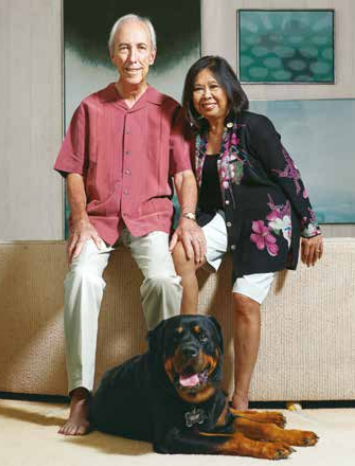 Shortly later, we noticed that Rufus was limping and acted less jovial than his usual self. We learned that he had aggressive arthritis and hip dysplasia—most common with large dogs. This is the dog who saved me and later became my uncertified ‘service dog.’ I was going to help him at all cost. Now it was our turn to caregive Rufus.
Shortly later, we noticed that Rufus was limping and acted less jovial than his usual self. We learned that he had aggressive arthritis and hip dysplasia—most common with large dogs. This is the dog who saved me and later became my uncertified ‘service dog.’ I was going to help him at all cost. Now it was our turn to caregive Rufus.
After a pre-diagnosis from our veterinarian Dr. Allen Takayama, we were sent to the Veterinary Emergency & Referral Center of Hawaii where Dr. Doug Rohn gave Rufus an MRI to show us the advancement of his medical ailments.
We were told about an animal acupuncturist, Dr. Wendy Asato, in Kailua. Today, Rufus is responding well to acupuncture and happily goes in once a month for his treatments.
Giving Thanks For A Second Chance
My husband jokes that our home is the Burns-Tomimbang-Rufus nursing home. We are all in recovery. It’s been a roller-coaster ride for nearly three years, but we’ve each managed to caregive one another and survive many of our challenges together. While our struggles may be far from over, we are in total gratitude for each day, each moment.
We’ve come to understand that senior living not only means navigating our way through our own aging process and health issues, we also need to caregive our loved ones. It is a fact of life. Hopefully, we can all learn and teach one another how to shortcut through this part of life. We celebrate life in a whole new way with moments and milestones each day. And we can’t say thank you enough to the people who have helped us during these critical times, including our family, friends, doctors, nurses, therapists and our Times Supermarket pharmacist.
A year to the day I collapsed at home, I found the EMTs and firefighters who responded to our 911 call and came to my home. I had the chance to thank them personally for saving my life. They, in turn, thanked me, saying they rarely hear about what happens to their cases and it makes them feel good to know that someone they helped is doing OK. Many do not survive. I’m forever grateful to them, because I did.
Jim, me and Rufus are living the “new normal.” We will never be the same people we were before all of this. And that’s ok. It sort of feels good to be different…to see life and feel the gifts that come our way.
We constantly remind people like us—caregivers—to look for agencies and organizations that can offer support. They are out there. And caregiving as a couple does make your love richer and offer more tenderness in your relationship. And love should thrive “in sickness and in health.”
If you or a family member is in need of professional caregiving help, please resource this issue of Generations Magazine or visit www.Generations808.com. Additional information can be found at www.caregivers.com or search support groups by county at www.tinyurl.com/hawaiicares.
Emme is a veteran broadcaster, with more than 35 years of experience in media. Nearly 20 yrs. Ago she launched EMME, Inc. and her TV series “Emme’s Island Moments,” where she interviewed everyone from pop idols to U.S. presidents.

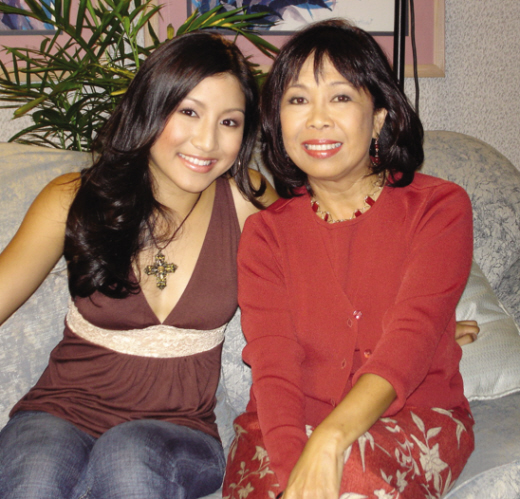
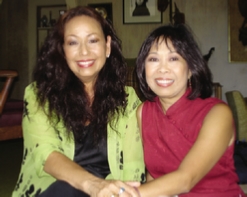
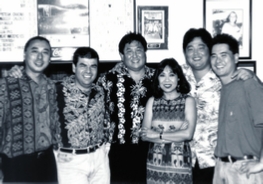
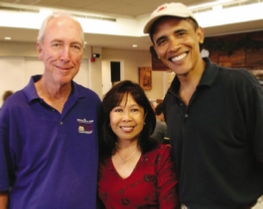


Leave a Reply